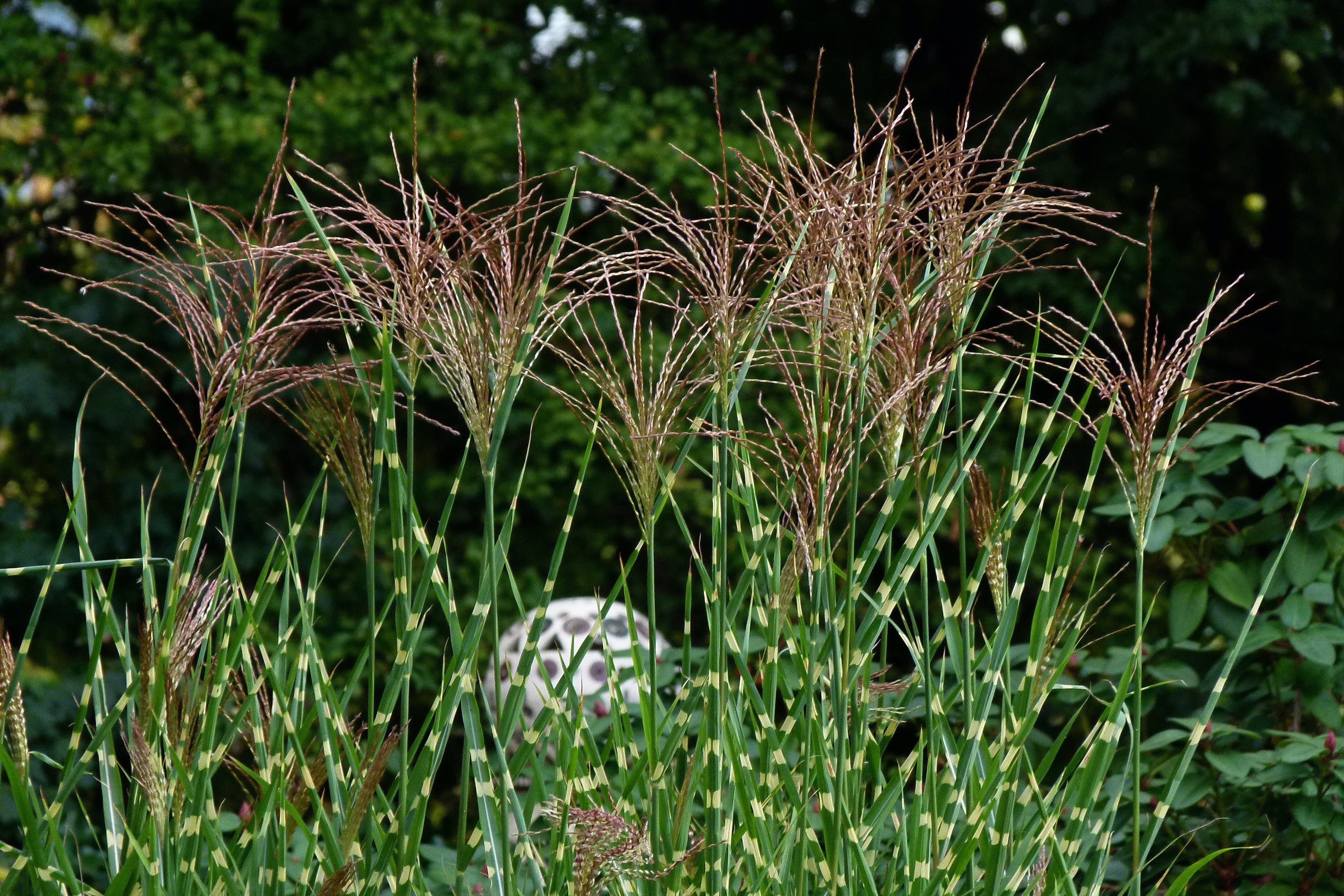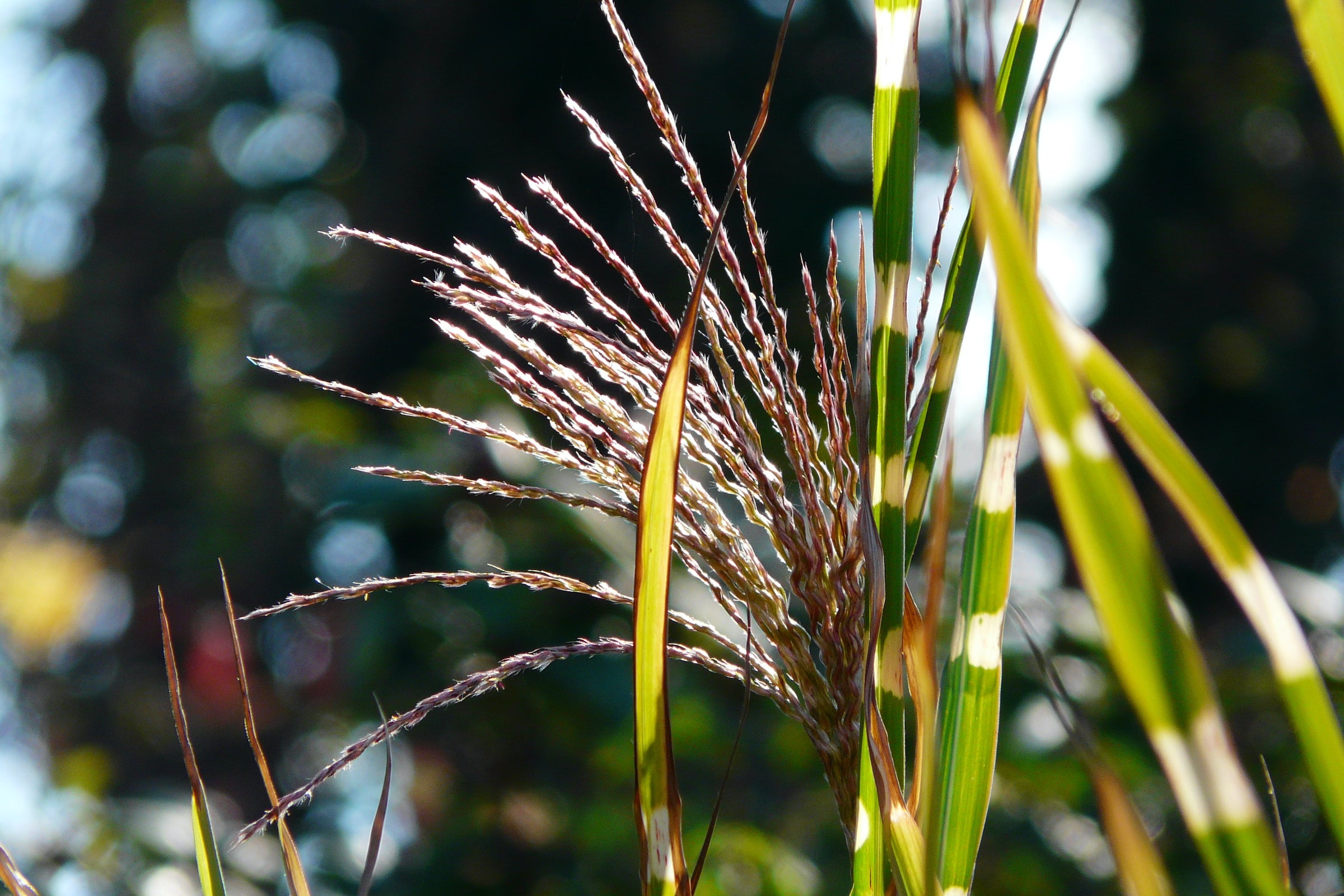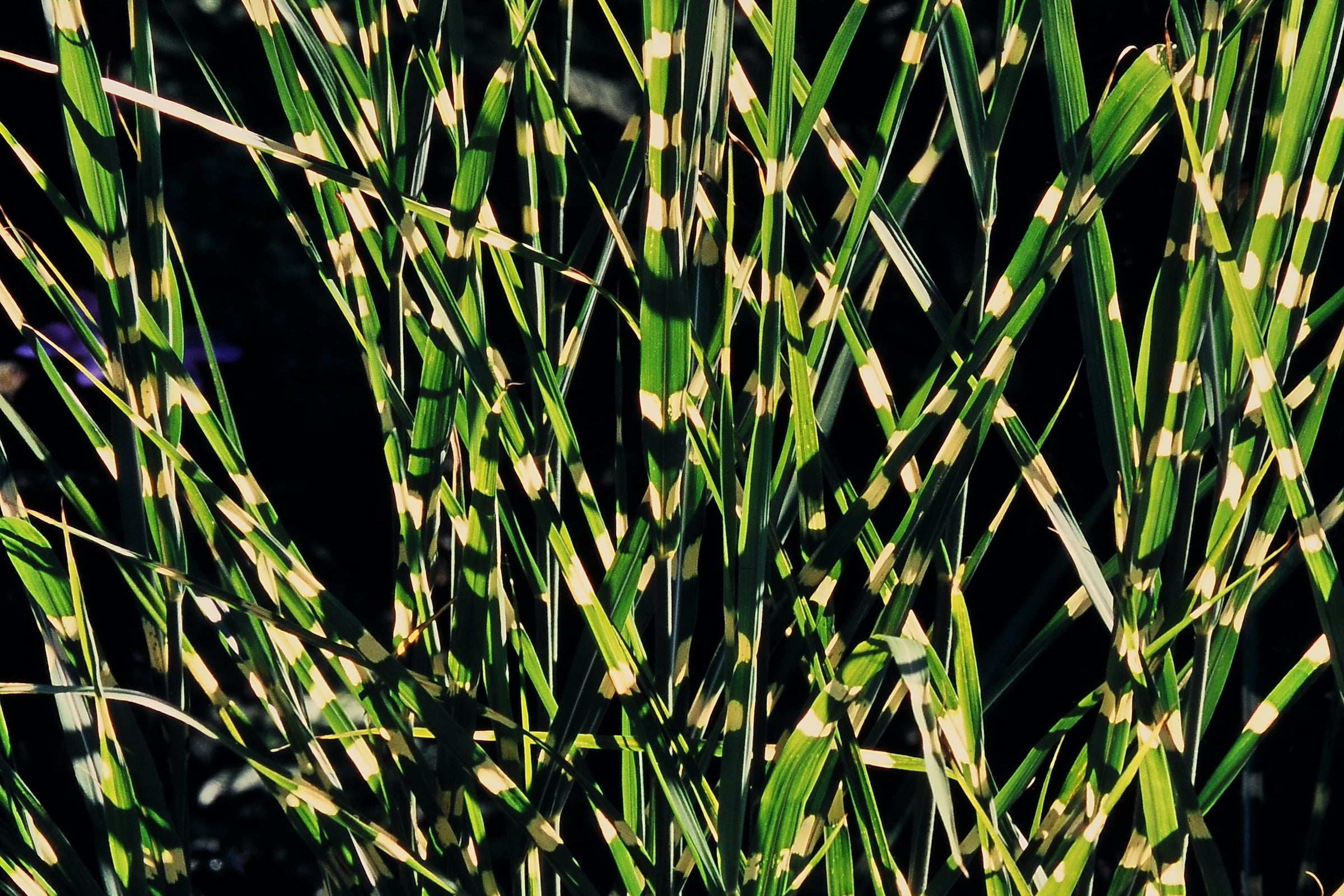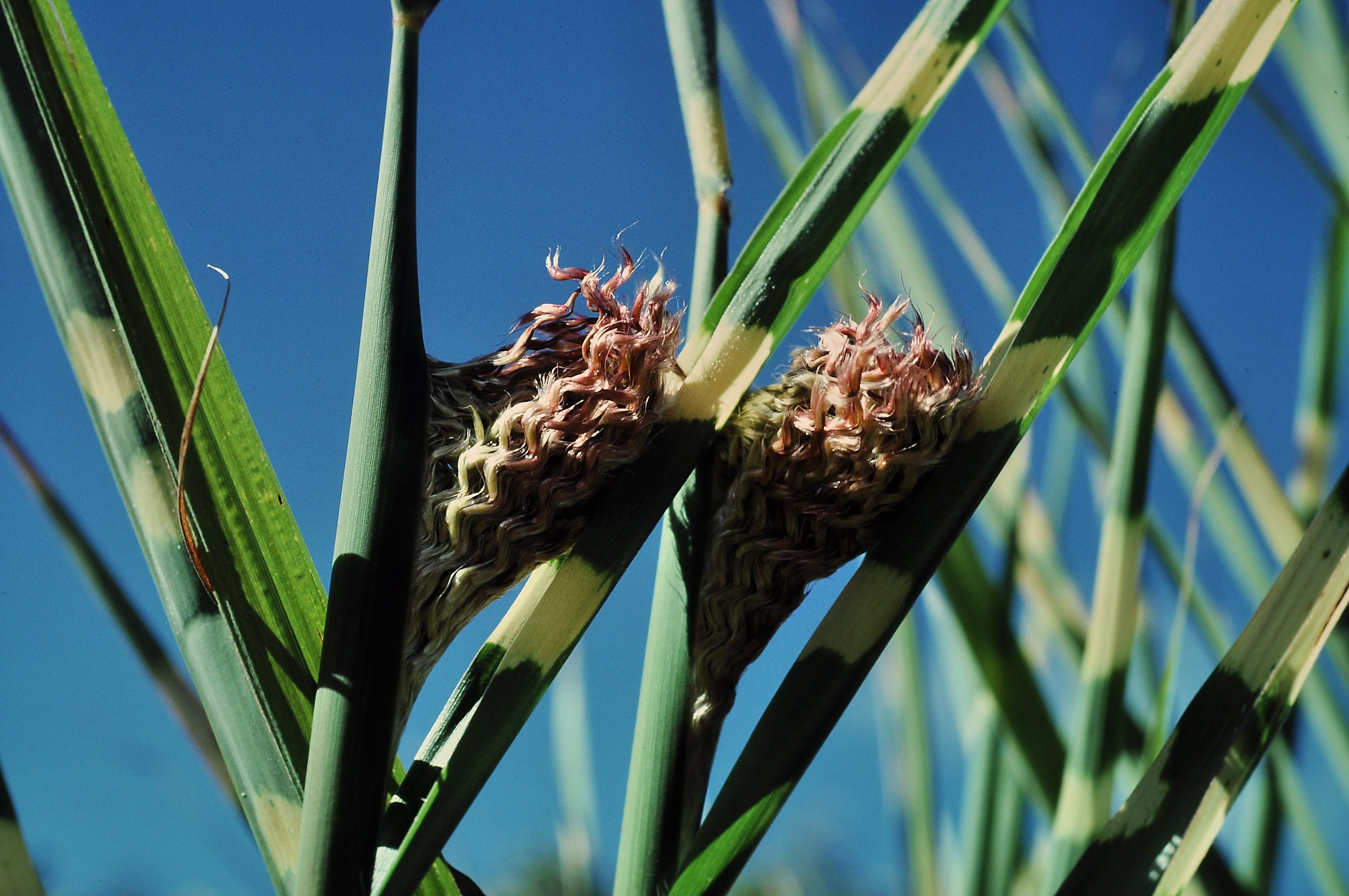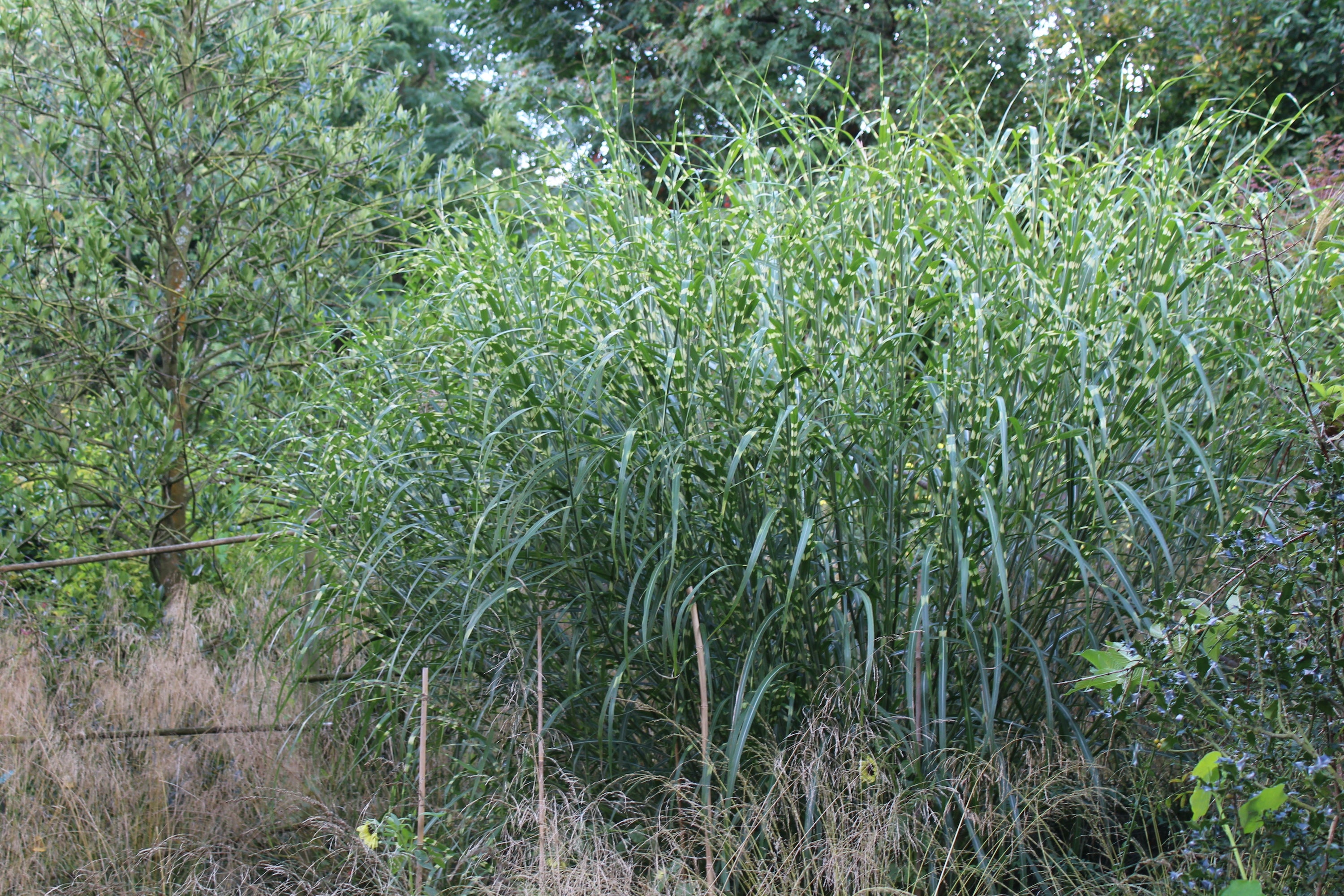Miscanthus sinensis 'Strictus' (v)
Approx. 0.5 litre pot
About this cultivar:
Miscanthus sinensis 'Strictus' (v) won the Royal Horticultural Society Award of Garden Merit (RHS AGM) in 2001. The trials notes say 'Similar to 'Zebrinus' in leaf marking but more upright in habit. Forms tight stiffly upright clumps. Cream tranverse bands appear on leaves earlier than other varieties, with leaves turning a pale brown colour in autumn. Particularly good for winter impact. Buff, heavily flushed with pink, silvery flowers are crinkley when open. Common name porcupine grass. One of the first Miscanthus in cultivation in Western gardens.'
The overall effect is something exotic and psychedelic. Currently we think this effect (likewise with 'Zebrinus') is awfully ugly. Awfugly!?! Ugh! It grows well with us but we have taken it out of our garden! Your exotic tastes may differ, if so, we are happy to take your money! Isn't that great customer service?!?!
- Position: Full sun, partial shade
- Soil: Almost any soil, grows well in Ballyrobert
- Flowers: October, November
- Other features: Royal Horticultural Society Award of Garden Merit (RHS AGM)
- Hardiness: H6 - Hardy in all of UK and northern Europe (-20 to -15°C), Fully hardy, grows well in Ballyrobert
- Habit: Clump forming, Tufted
- Foliage: Semi evergreen
- Height: 150 - 210 cm (5 - 7 ft)
- Spread: 75 - 100 cm (3.5 - 4 ft)
- Time to full growth: 2 to 5 years
- Plant type: Herbaceous Perennial, Grass like
- Colour: Green, yellow, white
- Goes well with: Helianthus, Echinacea, Coreopsis or Sedum
About this genus:
Miscanthus gets it name from the Greek for stem, miskos, and flower, anthos. It is commonly known as Maiden Grass. It is renowned for its versatility as a tall, perennial, ornamental grass. New introductions from Germany and Japan have improved stature, foliage colour, and flower heads.
Many of the popular hybrid Miscanthus are variegated (e.g., Miscanthus 'Morning Light') and many Maiden grasses also have attractive seed heads. Variegated ornamental grasses offer a colour contrast in the garden as well as a pleasing habit.
A few selections of Miscanthus sinensis are controversial because they re-seed excessively, primarily in disturbed sites. We continually discard any Miscanthus that displays this tendency.
Try pairing Miscanthus with flowering plants such as Helianthus, Echinacea, Coreopsis or Sedum. Mainden Grass also looks great in large drifts where the leaves and flower heads can be seen swaying in the wind. It is a tough, low maintenance plant which makes it perfect for wet or dry gardens in any situation apart from full shade. Miscanthus is versatile from a design standpoint; it can be used as a specimen, for massing or screening, in large containers, or at the pond's edge. I say plant this grass where its wonderful winter interest can be enjoyed!

